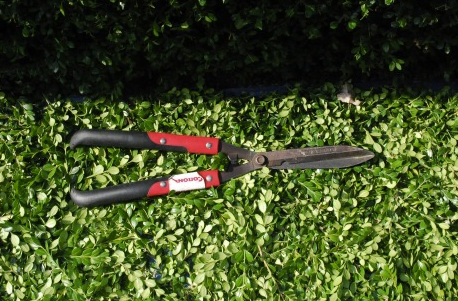 Hauling those gardening tools around, bending, stretching, reaching and ploughing can really work up a sweat. Summer might be coming to an end, but across the country there’s still plenty of sizzle in the air. Gardening is a workout (no matter what your fitness level) which means hydration and managing your body temperature is key. Every year there are reported cases of heat stroke happening while gardeners are “putting around”—which makes it sound like gardening is a hobby that doesn’t raise the heart rate.
Hauling those gardening tools around, bending, stretching, reaching and ploughing can really work up a sweat. Summer might be coming to an end, but across the country there’s still plenty of sizzle in the air. Gardening is a workout (no matter what your fitness level) which means hydration and managing your body temperature is key. Every year there are reported cases of heat stroke happening while gardeners are “putting around”—which makes it sound like gardening is a hobby that doesn’t raise the heart rate.
Real gardeners know the struggle is real: Stinging eyes from perspiration, air too muggy to make your glasses comfortable and finishing up a deadheading session feeling like you just left the weight circuit at the gym. Pace yourself and try to avoid midday gardening. If you need to mow, save it for late in the afternoon (in the morning the dew makes it tough, which means you’ll be working harder). Even watering midday can be problematic since the heat can make your plants “sizzle.” You don’t want to steam your edible crop unless they’ve been cut and put in a pan.
Keeping Your Cool
Obviously what you wear can make a big difference, but some gardeners are prone to piling on clothes as protective gear. Reach for breathable, light, natural fabrics like cotton. Loose items that cover your skin for sun protection coupled with a wide brimmed hat are ideal. Your gait can also play a big role—practice walking with arms akimbo and “loosely” so you can capture any passing breeze.
Try wearing a bandana knotted loosely around your neck. It offers a cooling effect when the sweat evaporates. Flip flops can be great gardening “shoes” depending on the task at hand, especially since there’s nothing as refreshing as running hose water over your feet. Of course, closed toed shoes or Crocs should be worn for bigger tasks, but your hands and feet can dictate the rest of your body’s temperature.
Facing Down Indian Summers
One of the best investments you can make is a large outdoor fan. Not only does it keep the breeze going, it also repels pests like mosquitoes. You can find one that’s attached to hoses, making it possible to enjoy a very fine, cool mist. Hydration is key, so don’t forget to drink your H2O. A good rule of thumb is to drink the same in ounces per day as your body weight—a 150 pound person should aim for 1500 ounces of water stretched out evenly during your waking hours.
Wear sunscreen, and if you didn’t finish all your winterizing activities in September, make sure to take care of them pronto as autumn sets in. The fertilizers need to be absorbed—just like you, winter prep takes some time.
 Originally created by Buddhist monks as a means of meditation, Zen gardens aren’t just beautiful, eco-friendly and relatively easy to create, but they also offer mental, emotional and even physical health benefits. If you’ve been tinkering with the idea of your own Zen, sand or rock garden, the end of summer is the perfect time to transition. This is your space for meditation, whether it’s simply contemplating and reflecting on the day or a place to get creative and write, sketch or paint.
Originally created by Buddhist monks as a means of meditation, Zen gardens aren’t just beautiful, eco-friendly and relatively easy to create, but they also offer mental, emotional and even physical health benefits. If you’ve been tinkering with the idea of your own Zen, sand or rock garden, the end of summer is the perfect time to transition. This is your space for meditation, whether it’s simply contemplating and reflecting on the day or a place to get creative and write, sketch or paint.
Even better, a Zen garden is a means of extending your interior space to the outdoors. You can create a walking meditation circle, such as a simple maze where you can practice inner reflections. You can pepper in comfortable outdoor seating, turning your Zen space into a peaceful social area. No matter what type of vibe you’re after, one thing is certain—dry landscape can make for a gorgeous garden.
Benefits of a Zen Garden
Maybe you don’t have a green thumb, the time for a flower/plant/veggie garden or you live in a region where it’s not eco-friendly to have a green yard. All of these situations might mean a Zen approach is better for you. Historically, Zen gardens are created with sand, and intricate rake patterns are brushed into them daily. If you want to go authentic, the regular rakings can be a great way to slow down and reflect.
However, there are no “rules” when it comes to Zen gardens, just the foundation of a “dry landscape.” This can include anything from pebbles to sawdust. Some Zen gardens have water features, sculpted shrubs or trees, reeds or tall grass plants. They tend to have a minimalist, calming feel to them.
Encouraging Meditation
Numerous studies have showcased the benefits of meditation—or in some cases simply slowing down, not looking at a screen and indulging in a little “you” time. Those who meditate enjoy less illness, fewer chronic diseases and fewer signs of stress (such as thinning hair and weight gain). It can improve your relationships, your career and your self-image. However, few people have the time to attend a regular meditative yoga class, but you do have time to spend a few minutes each day in your Zen garden.
While rose bushes might be lovely and an herb garden can provide farm to table fare, don’t forget to take care of yourself while gardening and take time to celebrate the moment.
The middle of summer is the perfect time to start a “child’s garden,” since the attention span of little ones often isn’t long enough for all of that spring prep work you did. As the weather heats up and you want to encourage kids to spend some times outdoors, working on a garden together is the perfect way to enjoy the sunshine while introducing children to the magic of gardening. There are many easy tasks they can complete and plenty of fun peppered in (like discovering how to handle slugs and snails or uncovering earthworms).
First, figure out what kind of garden your child wants. A habitat garden that attracts butterflies? A veggie and herb garden where they really learn farm to table practices and can then help whip up delicious meals? How about a plant and flower garden, where kids handpick their plants after you’ve narrowed down the options based on time of year and region?
Simple Gardening Tasks for Kids
Children, depending on their age, can actually take over the entire project with a bit of initial guidance. Planting seeds, watering, soil management and tracking the growth of plants are all easy tasks. Nothing compares to your child’s first roses, and showing someone the magic of caring for a living thing is a huge milestone. However, be realistic when it comes to your child’s interest and abilities for routine care. They can be fickle, and this might be a project you’ll have to take over.
On the other hand, if you’re a good gardening role model, children will happily join you in the garden. The key to raising a dedicated gardener is making sure they enjoy small successes and “helping” them when they’re not looking (and as necessary). Remember that plants are much easier to care for than seeds, and the immediate gratification is better suited for children.
Gardening as a Family
Your child’s first garden can easily be a family activity and a means to spend more time together. Plus, it’s an invaluable learning opportunity no matter what your child’s interests. You can even grow fungus to learn about recycling or indulge in some humane pest control tactics (such as using rum rather than harmful chemicals to lure in insects).
A few common summer gardening tasks suited for kids include setting snail bait, pinching and deadheading flowers, collecting veggies and fruits when they’re ripe, watering plants, moving potted plants to the shade, mulching and weeding. You’ll be surprised by what you consider a chore and what your child considers fun.
Who knows? You might have a future professional gardener on your hands.
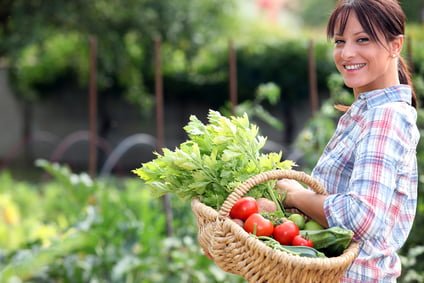 Many backyard gardeners prefer blossoms and herbs for the summer, but heartier veggies and fruits in the autumn. If you hope to have an edible option in your backyard come the fall, it’s time to start preparing now. The milder weather, pests going dormant and that idyllic moist yet well-draining soil of the autumn months make for a much easier bounty.
Many backyard gardeners prefer blossoms and herbs for the summer, but heartier veggies and fruits in the autumn. If you hope to have an edible option in your backyard come the fall, it’s time to start preparing now. The milder weather, pests going dormant and that idyllic moist yet well-draining soil of the autumn months make for a much easier bounty.
If you live in a region that has earlier frost periods, starting an autumn garden in late July or August is perfect. Don’t worry about the high daytime temperature because the evening coolness will even things out, more so as the daylight hours decrease. Choose foods that have short maturity dates—however, if you live in extreme heat, hold off until September.
Prep Work
Just like in the kitchen, you need to leave time for prep work. Hopefully you’ve been weeding, getting rid of diseased plants and keeping the soil untouched throughout the summer. That will make this job easier. When this is the case, simply clear space, mix in some compost and plant away. Unfortunately, most summer gardens can grow a little out of control. Start by cleaning the garden, removing weeds, spent plants and fallen fruits.
The two items that can stay are peppers and tomatoes, since they’ll still be ripening. Remember to rotate crops if this is you’re second planting season by taking note of what grew where, and then move mulch to the side. It’s easier to “freshen up” your garden without mulch in the way, and remember that if it’s still “good” you can use it for the autumn. In a pinch, use straw for mulch—it’s easy to scatter and spiders love it (they’ll be your helpful garden tenders). Another option is fallen and shredded leaves.
Getting There
Fluff your soil with a garden fork (no major tilling required in many areas). If you really want to cover your bases, now is the time to test your soil. Most attention should be paid to compost, which can be dressed as you till. Manure should have been composting for at least half a year, and remember that it can burn plants if it’s too fresh (and be a health hazard to you). Fertilizer can be added now if it’s slow acting, as can amendments such as blood meal.
Finally, consider frost protection such as hoop covers. Now is the time to get them installed. However, only install the frames for now and leave the covers for later. A little preparation in the short run can pave the way for an autumn bounty like no other. Are you ready?
Sometimes “gardening” isn’t just about which annuals you’re planting this year, but rather the entire theme of your landscape. Not everyone with a green thumb is a natural veggie lover or flower fanatic. In fact, the biggest trends in summer landscaping hearken back to simpler times—both by choice and by necessity. In some parts of the country you get “rationed water” (such as in Nevada and California), which means an ultra green yard simply isn’t possible. In other parts of the country, water conservation is a big concern, which means embracing rock gardens and plants requiring less water. 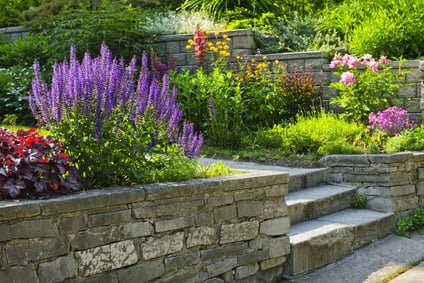
Conservation overall is a major trend in 2014 landscaping. However, one of the biggest trends is edible gardens, which takes garden to table to home cooking. Why just have a beautiful garden when you can have one that’s delicious, too? You don’t need much space to plant some of your favorites. In fact, an herb garden can even thrive via container gardening in kitchen windows. Plant 80 percent herbs, veggies and fruits you know you love and 20 percent new (to you) produce to mix things up.
The Frugal Trendsetter
Gardening trends aren’t like fashion trends (thank goodness). In fact, with trends leaning towards conservation, that often means conserving the contents of your wallet, too. When you grow and prepare your own foods, you’re naturally going to save money. “Outdoor living,” or bringing the indoors out, is also a big 2014 trend as people want to make the most of their entire property. This means cozy outdoor seating including patio sets, benches and fire pits. You can easily spend thousands on outdoor furniture, or you can thrift or garage sale shop for finds. A stump, driftwood from your favorite beach or other natural finds can double as landscaping and furniture.
When to Skip a Trend
Consider trends inspiration—not rules. If you read about the best summer perennials and fall in love with a certain blossom that grows well in your region, you may have just found a new favorite flower. However, if a list of 2014 summer tree and shrub trends doesn’t strike your fancy because you dislike plums or cherries, skip it. Summer gardening trends will always ebb and flow, but they’re reflective of what the general population likes at the moment. Gardens are all about embracing your unique personality and tastes. You don’t want a garden like everyone else’s, but maybe a pinch here and there of something new can help liven things up.
 Gardening can be tremendously expensive or nearly free—it depends on your budget, creativity and goals. For the frugal gardener, you might want to harvest an edible or gorgeous garden without breaking the bank. After all, what’s the use of a delectable homecooked meal featuring the literal fruits of your labor when it’s cheaper to get organic produce from the local farmer’s market?
Gardening can be tremendously expensive or nearly free—it depends on your budget, creativity and goals. For the frugal gardener, you might want to harvest an edible or gorgeous garden without breaking the bank. After all, what’s the use of a delectable homecooked meal featuring the literal fruits of your labor when it’s cheaper to get organic produce from the local farmer’s market?
Start by shopping for seasonal discounts, just like you do with everything else. If it’s not in season right now, it can probably be scored for a great price. Look for off-season plants or those who are a little past their prime but can still work for you. Pick up seeds as they’re moved to the clearance rack year-round, since their shelf life is much more generous. Exercise your green thumb to bring plants in need of a little TLC back to life.
However, savvy shopping is just one way to go frugal.
1. Transplant Trading Brigade
Every party has a pooper—but that’s a good (and fertile) thing for gardeners. Bring all your gardening friends together for a transplant trading event, since many people have more plants each year than they can use. Late spring is a perfect time to trade duplicate herbs, tomatoes, flowers and other garden favorites. Add a potluck into the mix, featuring garden ingredients, and that’s a party no one will miss.
2. Hello, Dolly
Dolly the sheep might have given cloning a strange name, but when it comes to plants you can’t beat cloning. Reproducing premium plants via root divisions is easy for the savvy gardener. Once you get into mid season, gather cuttings and root them right away. June is the best month to do this and you can quickly double several crops, from rosemary to geraniums.
3. Compost Away
There’s no excuse for not composting, especially when it’s so easy to make your own. Why not use your “garbage” to give your garden the fertilizer it craves? Plus, you’re helping the environment at the same time.
4. Water Smart
Water in the evenings and your plants will be able to enjoy this wet nourishment for longer. Watering in the heat of the day means water will evaporate more quickly, with less of it actually doing the plants any good. Be sure not to over or under water as well.
From keeping an eye out for affordable gardening tools, nursery specials and learn cost saving tips from your local gardening store; there’s always a way to save your green in more ways than one.
Gardening season is peaking, but is there something just a little off about your yard, trellis or edible garden? There’s a “right” way to garden and plant for the best blossoms and edibles, as well as the most pleasing aesthetics. Even a seasoned gardener can fall into a common landscaping mishap, but the good news is that most are easy to fix and you have plenty of time to do so. Simultaneously, “good gardening” prepares your land for next summer’s yard and ensures you’re ahead of the curve.
One of the biggest faux pas is simply adding too much lawn ornamentation, which can turn a personalized garden into a kitschy one in all the wrong ways. It’s one of the most common landscaping mistakes since it’s so easy to get wooed by all those cute baubles at the store, but remember that simplicity is best. However, other mistakes aren’t so innocent—such as forgetting to recycle.
Biggest Blunders to Avoid
You should have a solid recycling and composting regimen in place. Most people are 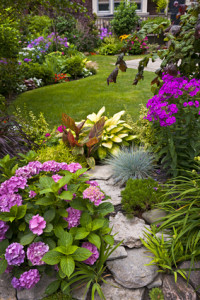 surprised by how much waste a yard can produce, from clippings to debris. Renting a shredder to create mulch is a great idea. Don’t forget to pick up the spoiled goods, since one of the biggest summer fruit trees gardening mistakes is leaving fruits to fall and rot. That’s a missed opportunity for great composting.
surprised by how much waste a yard can produce, from clippings to debris. Renting a shredder to create mulch is a great idea. Don’t forget to pick up the spoiled goods, since one of the biggest summer fruit trees gardening mistakes is leaving fruits to fall and rot. That’s a missed opportunity for great composting.
Wondering how to grow beautiful roses and why yours aren’t keeping pace with the neighbors’? It might be because they were planted in the wrong place. While most rose breeds are pretty durable and will make do in many environments, you need to take adequate sun exposure into account for each and every breed. Also make sure you’ve allowed enough room for them to grow and flourish—otherwise, you’ll be cramped come next year and might have to re-plant the entire area.
Aggressive prepping problems
If planted too deeply, it’s pretty easy to kill a tree. Overdoing it is a newbie mistake, but anyone can be guilty of this crime. Don’t assume that more soil is better, because plants can actually be “choked” with this method. Plant too deep and root rot can occur.
Another mistake is cutting the grass too short in an effort to create a cleaner looking yard or to get more time between clippings. This can lead to bare patches, which is a welcome home for diseases and insects. In addition, your lawn will require more water since it won’t be able to hold on to moisture near the roots with added exposure to the sun.
Perhaps the most unfortunate of summer gardening mistakes is forgetting the view from the window. You planted this garden to enjoy it, so make sure you have a front row view from your favorite chair or indoor table. Sure, it’s fantastic to pull up in the driveway and take in a gorgeously groomed yard, but how much time do you really spend in the driveway? Make sure the landscaping joy is maximized for you and that you can indulge in some sightseeing throughout the day—otherwise, it’s more of a treat for your neighbors than yourself.
Whether you’re a certified black thumb or you consider gardening the love of your life, sometimes you just want to make gardening time easier. Gardening hacks give you the shortcuts necessary to spend less time struggling and more time literally smelling the roses. It’s spring, so if you’ve waited until “spring cleaning” to spiffy up those old clay pots, you’re probably facing some tough deposits. Mix equal parts water, white vinegar and rubbing alcohol in a spray bottle, then simply spray and scrub to quickly remove residue of previous plants. This will give you a clean slate for new potting.
Have you been battling with the line of your string trimmer, leading to endless jams or even 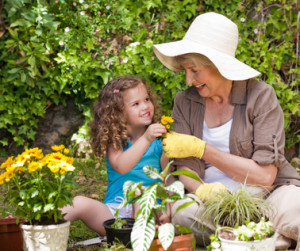 breakage? The next time you tackle this tool, spray it with vegetable oil prior to installing the trimmer. Coconut oil will also do the trick. A little preventative prepping can go a long way in making your tools last longer.
breakage? The next time you tackle this tool, spray it with vegetable oil prior to installing the trimmer. Coconut oil will also do the trick. A little preventative prepping can go a long way in making your tools last longer.
1. Mani Maintenance
Love to garden, but want to keep your manicure looking fresh, too? Simply scrape your fingernails across a soap bar and you’ll “seal” the undersides. The end result? Dirt and soil can’t collect there, and all you need is a simple nailbrush to quickly remove the soap layer after playing in the dirt. Who says both you and your yard can’t look gorgeous?
2. Always Be Prepared
It seems like you always need gardening twine at the least opportune time. To make sure it’s always handy, put a ball in a clay pot and pull the end out of the drain hole. Put the pot upside down near your garden for an instant, protected and easy twine holder. If you have kids, they can even customize it with a little acrylic paint.
3. Measure Up
Any tool with a long handle can be made into a measuring stick when it’s past its prime. Mark off inches, feet or any other unit of measurement you prefer. Planting things within uniform distances can be impossible to eyeball and you don’t want to get your fabric tape unnecessarily dirty. The best measuring device is probably something you already have around, like that dull shovel.
4. Keep It Tidy
Don’t like the looks of markers you buy at the store or what comes with your seed packs? Use natural stones with flat faces as markers. All you need is a permanent marker, some good handwriting (you can outsource this) and you’ll instantly pretty up the garden while giving it an au natural appeal. Ditch the plastic that looks tacky and the cheap wood markers that get dirty.
5. Pest Control
Aphids are one of the most common pests to plague a garden, but mix a strong hose blast with simple insecticidal soap and you’ll send them running. However, a greener option is simply using tape. Get some wide tape, put it around your hand (sticky side out) and pat down the leaves. Kids can also help with this, but focus mostly on the underside of leaves where aphids like to hide.
Maybe you don’t have such a black thumb after all—maybe you’re just being plagued by some of the most common gardening problems around. One of the biggest obstacles gardeners face are deer, arguably the biggest pest of all. They can’t get enough of your veggies, plants and blossoms, and even if something isn’t part of their “regular” diet, these woodland creatures will go off course if they’re hungry enough.
Even though deer can jump exceptionally high, they have problems with “double fencing” and will move on to greener gardens. Even two fences close together at just four feet tall is enough to make a deer think twice. As for squirrels, another common pest, they love a lot  of things about gardens but can’t stand plants with strong smells. Plant some cayenne peppers for a guaranteed squirrel-free garden.
of things about gardens but can’t stand plants with strong smells. Plant some cayenne peppers for a guaranteed squirrel-free garden.
Pests of All Shapes and Sizes
Another group of troublemakers are moles, who are probably after the white grubs nestled in gardens. Remove the grubs and you’ll remove the moles in one fell swoop. If you can’t spot these gray rodents, buried walls often do the trick to keep moles out of the garden. Use compacted clay or stone that’s at least half a foot thick. They may still climb over, but it’s a good deterrent.
Mildew, especially the powdery variety, can easily take over your leaves. The infected ones need to be snipped and removed so it doesn’t spread. Never put them in compost, and consider spraying once a week to keep things in check. However, spraying will only work with hydrated plants, so indulge your garden in a “deep watering” two days before the spray.
Tackling the Intruders
A very common garden intruder is blackspot fungus, which thrives in humid, hot weather. It looks like black spots on the leaves and it’s especially fond of roses. This can also be treated with a weekly spray and requires full saturation. Don’t forget to spray the ground surrounding the plants, and remove diseased leaves to the trash—not the compost. Again, hydration is key.
Finally, there’s the most dreaded uninvited guests—insects. Each bug may require slightly different approaches, but always choose an earth-friendly spray that’s preferably listed on OMRI (meaning it’s been approved to be organic in the US). Try to only spray the infected plants avoiding any unnecessary chemicals, and consider indulging in some research about natural removal methods.
Pests come in all shapes and sizes, but try to take it as a compliment. Similar to someone copying your outfit, they clearly like what you have going on—even if it’s frustrating for you.
You love getting your hands dirty, but there’s no reason to take that sentiment to the extreme. There are many options for gardening tools at your local plant nursery—how can you know which ones you really need and which ones will be left collecting dust in the garage? There are only a few essential items that every gardener absolutely needs. Just like pruning and deadheading, it’s time to trim the fat and get down to basics.
Pruning shears are a must when the blades are sharp and they’re small in size. Go for a lightweight model for pruning perennials. Great brands include Corona and Felco, but whatever works best for you is going to be the “best pruning shears.” Consider what’s in your garden (ahem, how tough some of those plants are), how much weight you really want to carry around and shop accordingly.
A Little Off the Top
Scissors are another essential for snips and pruning, and you don’t need anything special. Regular household scissors often do the trick for cutting herbs, opening potting soil, cutting strings or slicing open seed packets. Don’t let anyone tell you that you need “gardening scissors” for the simplest of tasks. There might come a time when they’re necessary, such as harvesting vegetables, but for the average gardener that extra pair in the junk drawer will work just fine.
Other times, you’ll be facing a tough job and only a saw will suffice. A fixed-blade traditional “pull to cut” saw with a light curve is great for thicker branches. You can get a clean, fast cut through even the biggest limbs. This can also be used for cutting down smaller trees. Saws are especially important for bigger projects or if you’re seriously revamping the yard.
Well Groomed
A shovel and a rake are to gardening what your comb and brush are to getting ready for a night out. Sharpshooters are great, compact shovels featuring a narrow blade that is perfect for deeper holes. Even better, it can be sharpened. This means that once you invest in a quality gardening shovel, it’ll last for life. “Regular” shovels aren’t designed for planting. As for rakes, you may need a few (shrubs, removing leaves and moving mulch all require different rakes).
Lastly, a weeder can be your secret weapon. Also dubbed “dandelion diggers,” they make pulling up weeds simple. This task is nobody’s favorite, so don’t spend any more time on it than necessary. Get in and out quickly, making a dirty job not so dirty after all.



